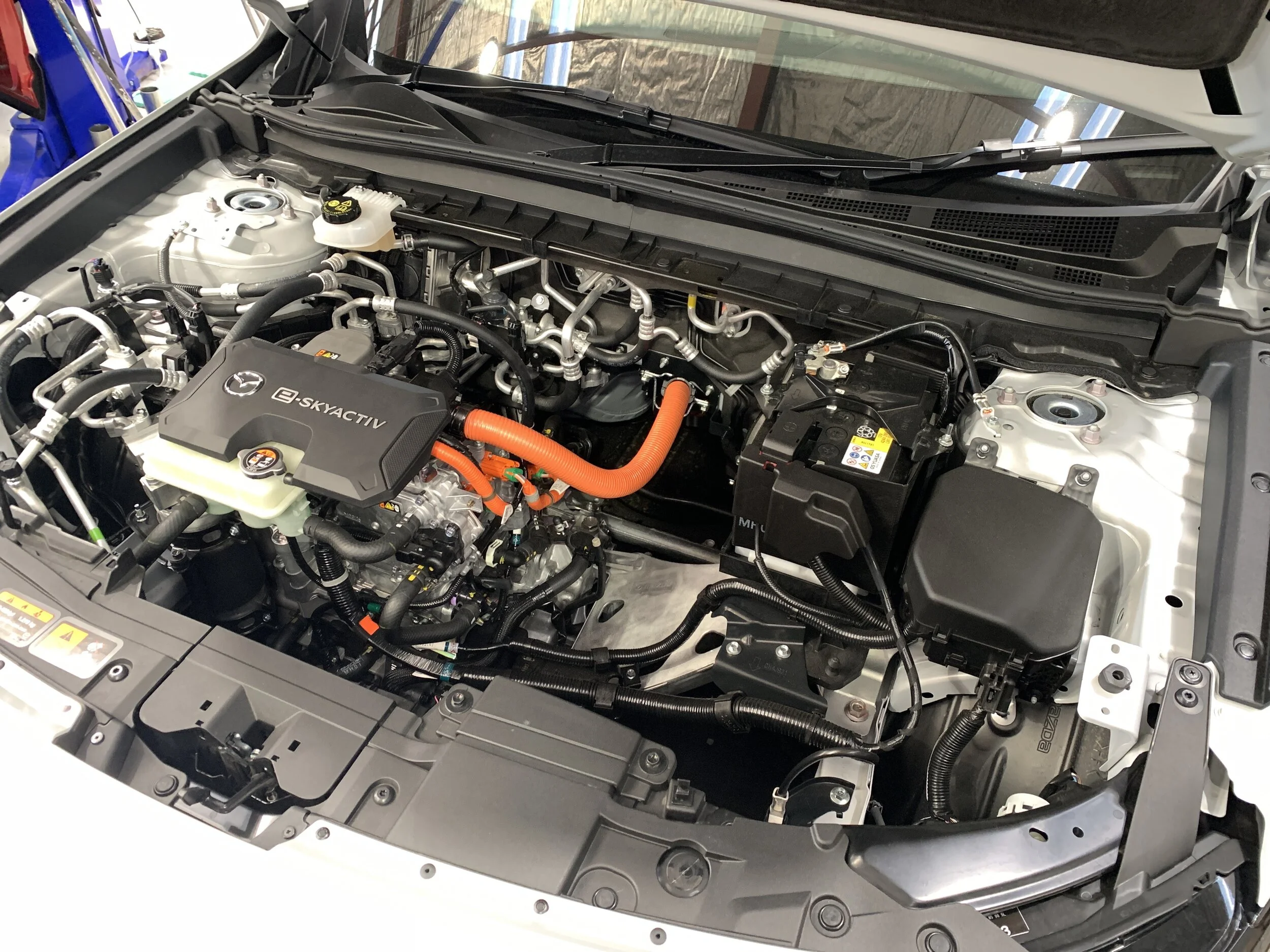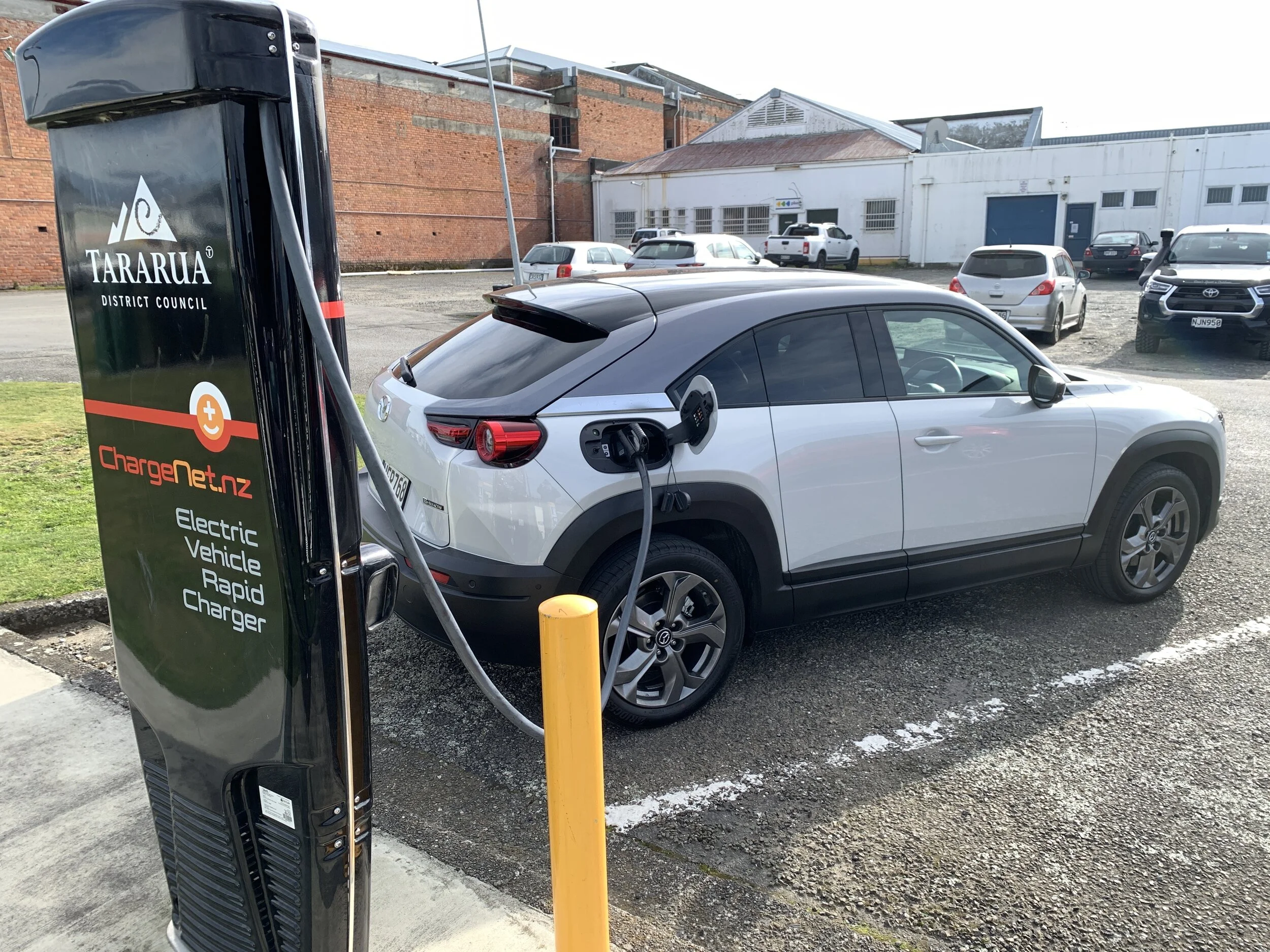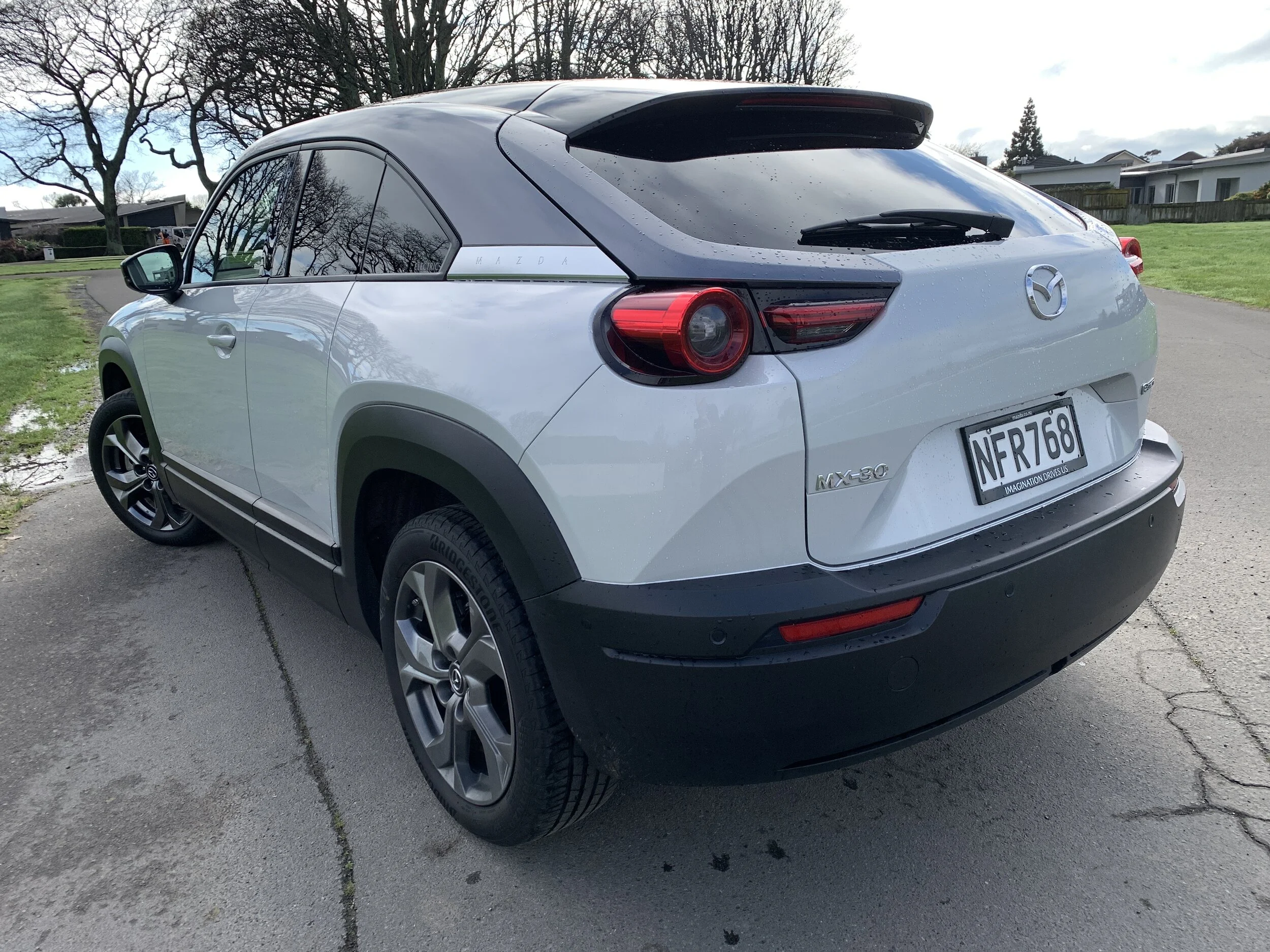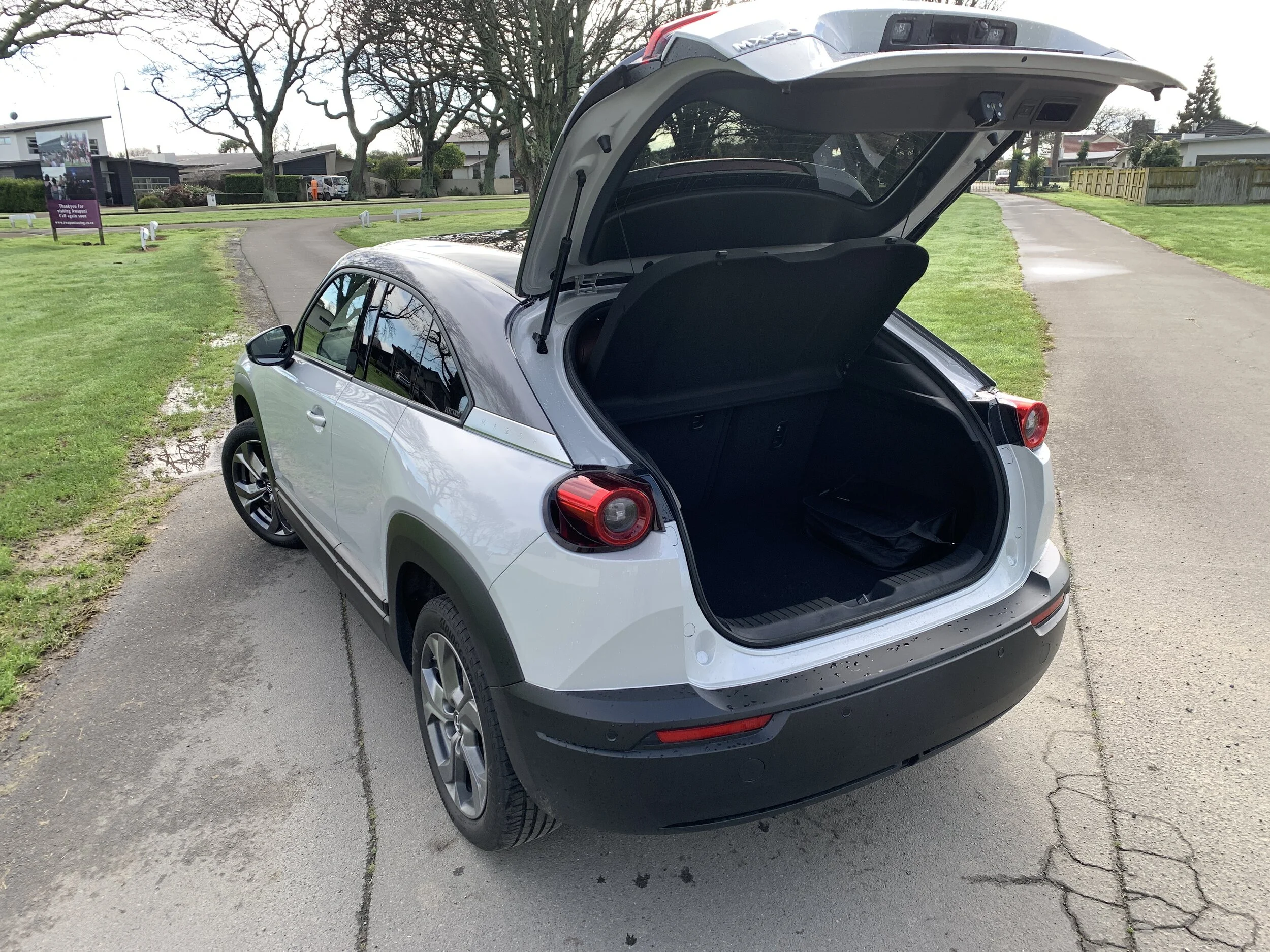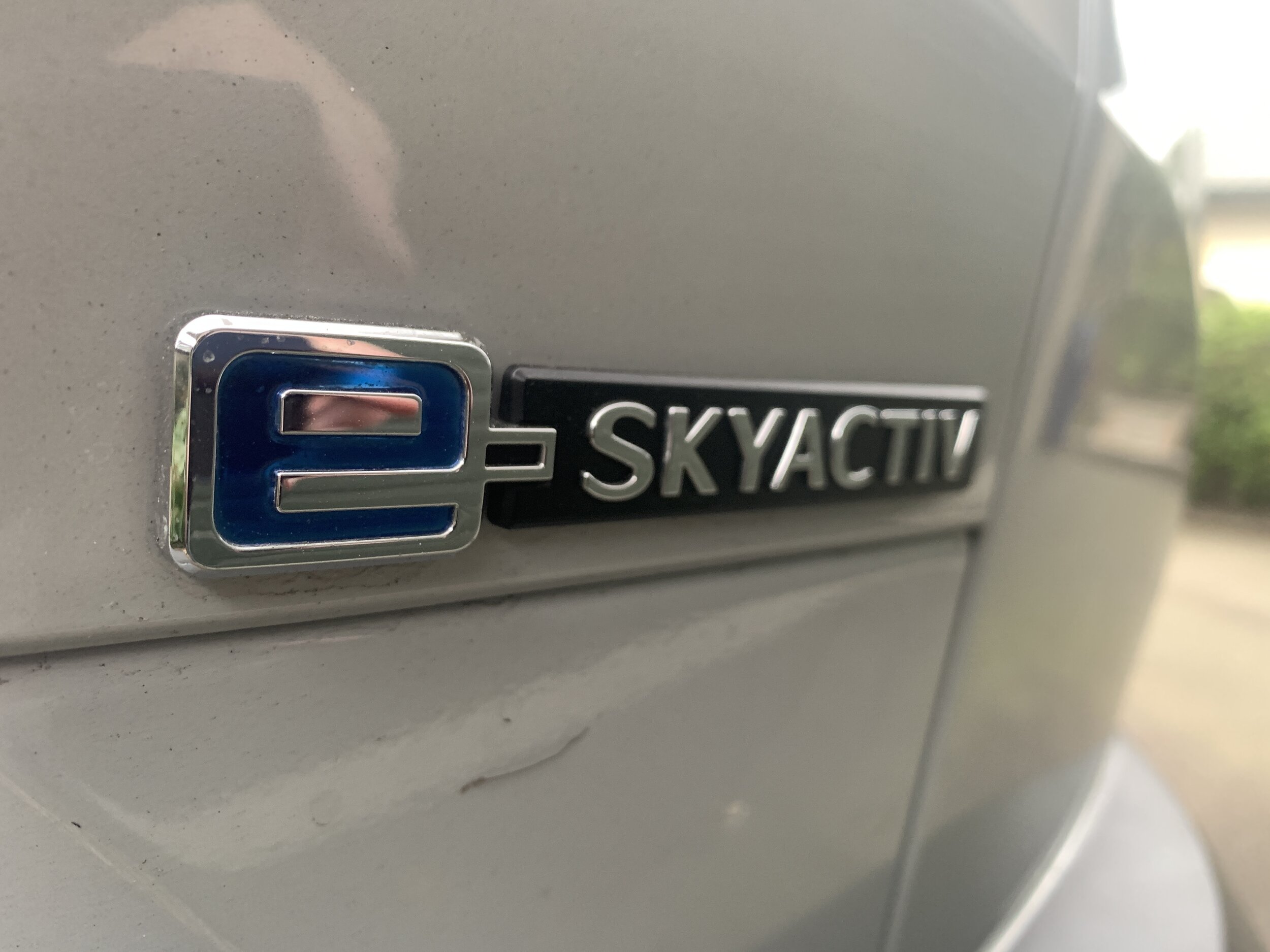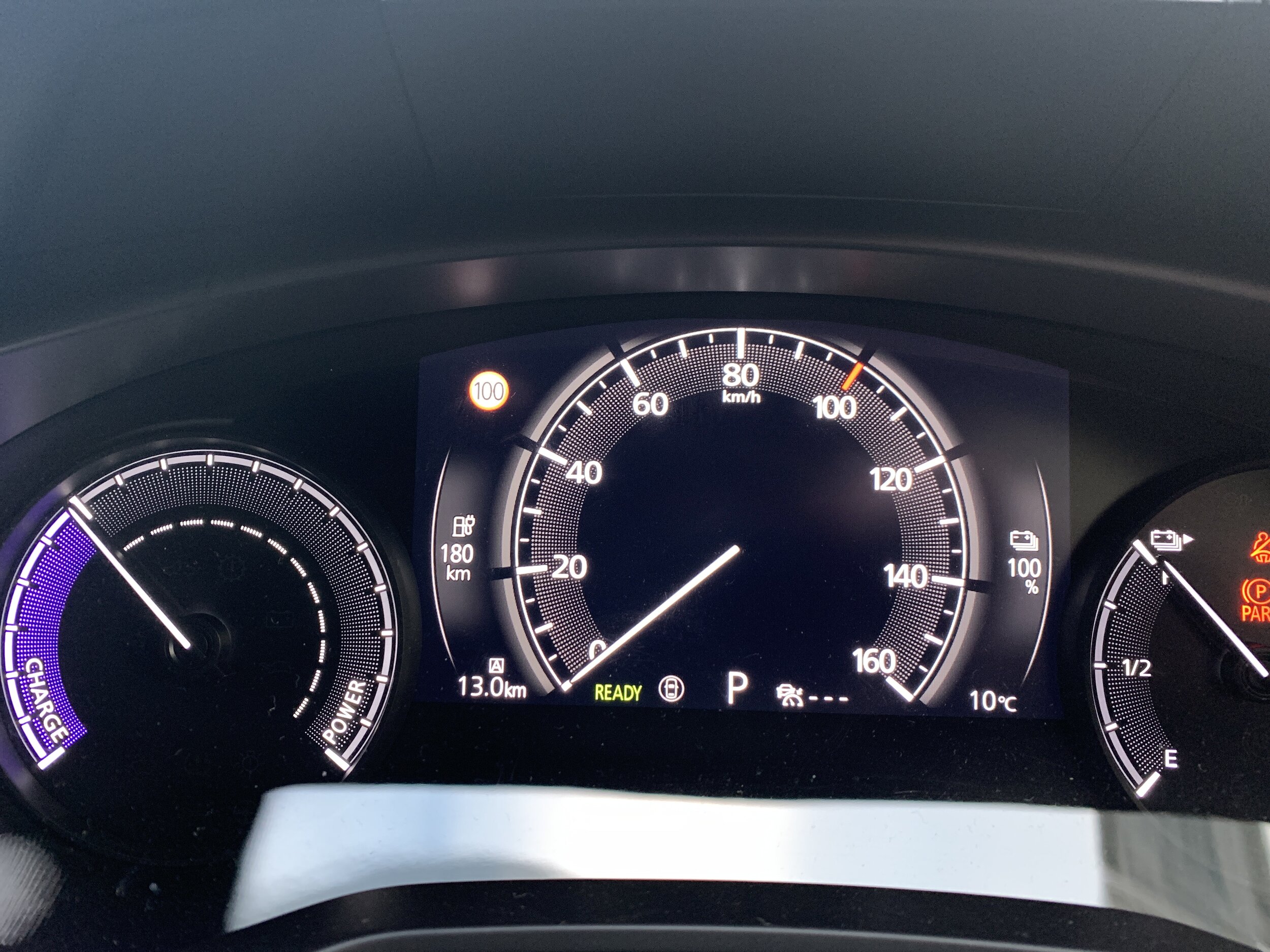Mazda MX-30 review: Less would be more
/The pluses are really there and it has genuine character, yet it’s a tougher car to recommend than it needs to be.
Price: $74,990 ($66,365 with Clean Car rebate).
Powertrain: 35.5 kWh lithium-ion battery and an AC synchronous electric motor with 107kW/271Nm, FWD; consumption 18.5kWh/100km; official range 224km, one speed automatic, front-wheel drive.
Vital statistics: 4395mm long, 1555mm high, 1795mm wide, 2655mm wheelbase. Luggage space 341-1146 litres. 18-inch alloy wheels.
We like: Deft to drive, dashing interior, strong specification.
We don’t like: Rear seating compromises, would fare better in low-to-mid $60k zone.
WHAT to do with a quasi-premium small electric car and meted range of barely 200kms’ on a charge?
Easy: take a positive attitude and follow the lead of others who are in same the club. Taking – quite literally - a leaf out of their guidebook might well ease nervousness in respect to considering the Mazda MX-30 in its fully electric format.
Yes, I know. As great as it is to have a chirpy-looking four-seater intensely flavoured by heritage features join the EV mix, there’s no escaping those two elephants in the room.
The price; $75,000 pre-rebate, is steep, all the moreso because just 200km range, according to WLTP tests (224km on ADR tests), doesn’t outwardly read well. Not least when you can buy more kWh-fed kilometres for your cash. The Hyundai Kona, a certain Tesla, that MG … all give more, for less.
That those are the cards dealt doesn’t mean they are all Mazda has to play. Honestly, on overall merit, Hiroshima’s first production electric – a car created to a formula it resisted countenancing - is still a strong hand.
One reason? It’s a proudly cheeky non-conformist. Would you expect a model whose shape, size and interior packaging are clearly urban-prioritised to be quite as sweet a steer on a cracking secondary road at speed? I didn’t. But it was.
The ‘MX’-ness is inherent not just to how it perkily it drives but also in the interaction you build with it. EVs are soul-less? Mazda mustn’t have received that memo. MX-30’s giant-killer attitude, emrging sometimes when you least expect it to, is readily evident. That might be a facet that really does mess with your mind when deciding what, exactly, this maker is up to.
The concept seems clear enough. Having pointed out the folly of EVs that deliver with more battery capacity than they often required, Mazda has proposed a car that ostensibly gives just enough for what it appears to be tailored for: City driving.
Given the range and the format, it really perfectly suits short-trip town-dwellers. It’s great in that environment. The reasonably compact size, the tall-ish driving position, the fairly decent – save for that over-shoulder view – visibility and its nippiness make it a fun and practical urban companion.
In that pure scenario, Mazda is correct: 200kms is more than enough. Indeed, if the 60kms’ average often cited as being all that many drivers achieve daily is indeed within your own remit, and assuming you make charging a regular habit, it’ll never be caught short. You’ll likely finish a regular day with at least 60 percent battery capacity. Overnight replenishment from your home supply will bring the car back to 100 percent by next morning. Then off you go again.
But what if you’re drawn to intra-urban touring regardless? Well, yes, it can cope; providing you adopt forethought. And have something of a steady resolve to cope with potential that, if you’re clocking 140-plus kilometres in an unbroken run, then the MX-30 is not an electric car to relax in. Sooner, rather than later, the spectre of range anxiety will loom.
Still, it’s not as if this is fresh EV news. Indeed, MX-30 owners who do want to adventure will find they’re hardly travelling in isolation. There’s a surprising count of established EV involvers who’ve learned to cope with the same scenario, and in good cheer.
Within the new car scene is the Mini Electric and BMW i3. BMW’s baubles follow the same logics. And live by the same rules.
Those committed to early generation Nissan Leafs are balanced even more precariously on the electric edge. Some of those cars are barely capable of achieving half the Mazda’s claimed range. And, yet, I often read about how they are, for better or worse, thrown into genuinely epic trips.
Crazy? Probably. But demonstrative nonetheless that, if the desire to break boundaries is strong enough, and the route planning is good enough, then the ‘impossible’ can be achieved.
In that spirit, a component of this test was a 181km run in open road conditions. It was interesting outing, for one reason being that it coincided with the day farmers were protesting Clean Car penalties. Driving an EV from one rural centre to another, knowing both places were hotbeds of discontent, was possibly a rash idea. Especially with arrival at my destination timing with a tractor parade. I hid the car down a side street. Only realising, once everything had simmered down, that the store opposite was a major rural goods’ outlet. Still, the Mazda came through unscathed.
It did have a busy, time, though. Cutting to the chase, two visits to a DC fast charger became prudent, each lasting around 20 minutes. The first ‘refill’ was at just past the halfway point, by which time the car, having left my home with 81 percent charge and an estimated range of 143km, was down to 50km in reserve, with a ‘low power’ warning flashing.
Twenty-three minutes on the first outlet – would’ve stayed longer, but had to meet a colleague - boosted the battery back to 65 percent, and range to 115km. I stopped again 30kms down the road for another quick zap. The range by then had fallen back to 88km; which seemed a bit risky because, while there wasn’t much further to travel, there was a big hill between where I was and where I wanted to be and heavy traffic. I bumped up to 123kms’ range. At journey end, the car was down to 39 percent battery life and 69kms’ remaining range.
Each of those ChargeNet stops came at a cost – thanks, Mazda, for providing a dongle – and, while neither impost was more than you’d spend on a couple of coffees, I guess it would start to add up if you drove this car in this way regularly.
Logically, most people probably wouldn’t. Because, you know, ‘city car.’ And, yet, somehow … well, you think they might. That’s because of the unexpected aspect of the MX-30’s character.
Mazda’s perennial focus on turning out big-selling cars with distinguishing handling allure is well known and admired. This is a brand that just cannot help but incorporate a fun flavour into its products, regardless of how useful that might be to them.
That talent for making its cars drive well definitely carries through into its first electric. Allegation of a lack of dynamic character has no grounding. Simply, this has to be considered one of the better handling small electric cars of the moment.
There’s clearly been a lot of effort put into not only weight saving but also ensuring that everything positions in the right places to achieve a frisky and fun outcome.
The AC synchronous electric motor makes but 107kW/271Nm, yet it’s set up to provision impressive zip, and the fact that it has just 35.5kWh of gross battery capacity slung under the floor means the kilo to kW ratio is quite decent. In being placed almost the full length of the cabin floor between the axles, the lithium ion battery is perfectly located for balance. The all-steel chassis being adapted from that of the current Mazda3 is good stuff and you needn’t worry that it has a relatively fundamental torsion beam rear suspension. It holds on well on winding roads and this, plus the car having a nicely square and semi-squat stance, but a very secure feel (enhanced, of course, by the battery’s weight) are beneficial to how it drives. It also has an above-average ride quality for a crossover or small SUV of this type.
Basically, for a car that needn’t have been designed that way, it is surprisingly and quite pleasingly fun to drive. The steering is particularly sweet; so direct, so well-weighted and, truly, so reminiscent of a keeper in our own garage, the first-generation of the most famous ‘MX’ of all, the MX-5. Another Mazda product that is best enjoyed in small doses yet whose reputation is hardly sullied for accepting that. It stunned me that the MX-30 should have even a skerrick of the same spirit. But there you go. It really does.
I’m not proposing the electric car would be a substitute, in driving let alone ownership, for the global hit roadster. That would be downright fatuous. But I would contend that, if a MX-30 driver would also have an MX-5, he or she would validly find they would not be as much an odd couple as it might seem.
To a point, at least. Convention to relay power to the front wheels rather than the rears is clearly a dividing point; just as the conduit of a single speed reduction gear - which effectively feels like there is no gearbox at all – makes it different to any fossil-fuelled front-drive Mazda. Even so, you can sense the Mazda-ness.
It really double-downs on this with the design, of course. It’s an interesting overall look for this one; sure, it’s a bit … erm, quite a bit … left of mainstream, but the overall shape is brilliant, just different enough to stand out from the rest of Mazda's CX range of vehicles, and the detailing utterly sublime. It surely deserves plus points for not being overtly 'electric' in appearance as some EVs tend to be. Tick the option of a three-colour paint scheme that paints the roof, the main bodywork and then those metallic side panels in different shades.
The cheeky implementation of “freestyle” doors, and cork accents in the interior are the two obvious talking points.
The first is a nod to the RX-8 sports car and the second is in reference to Mazda’s origins as a cork maker 100 years ago. But you knew that, right?
Actually, Mrs B didn’t, and even after I explained the importance of the cork, she still had misgivings. How would it far, she asked, if coffee were spilled on it? Good question, really.
To be fair, I concur with her view that the rear-hinged passenger doors for the back seats are also a bit awkward, too. They’re obviously necessary given the car’s overall dimension; even though the front doors are quite long, the body’s length would surely have had to have been increased to accept proper four doors.
It basically needs to be a longer car to be a better fit for adults front and rear. Though decent for headroom, the back part of the cabin as is really has to be considered very occasional for adults. Egress and access require more contortion than some will find appealing and those who dare will discover legroom, when a tall person is at the wheel (yup, that’s me) very limited. It’s also a little claustrophobic thanks to the small side windows.
Just like the i3? Well, of course, the two cars are so obviously alike in configuration and, from putting them together during this test, it’s amazing how close they are in physical shape and dimension. But it’s not fair to say Mazda has simply followed BMW’s lead.
Just look at how they present up front. BMW is patently a premium brand, and not too shabby when it comes to ergonomics, but the i3 is now an old design and, frankly, Mazda is a generation ahead, not least for functionality and presentation.
The combination of natural, recycled and vegan materials is clearly Mazda expressing the ‘woke’ credentials of driving an electric car, yet using these materials really lifts the cabin’s ambience. Takami spec is always something special, but this is a particularly beautiful environment; one of the best I’ve seen this year. The driving environment is as functionally slick as it is good looking, too, save for one glitch. Positioning the USB inputs at the base of the oddments tray, right underneath the gear selector, is a total pain. I basically had to get out of the car and kneel on the ground in order to plug my phone in.
However, that awkwardness takes nothing away from the overall merits of the layout. I appreciate the clever integration of familiar with new. For instance, MX-30s get a small touch-screen to operate the heating and ventilation, with proper buttons alongside are a welcome back-up. (helpful hint: Instead of firing up the heater on a cold morning, and seeing range estimation instantly drop 20kms as result, activate the excellent seat and steering wheel warmers instead; they’re virtually instantaneous, very effective and seem to have no tangible effect on the battery).
The car also has an 8.8-inch infotainment screen controlled by a turn-and-push dial in the centre console; again, this might seem old-hat in this era of haptic touch screens, but in reality it is easier to operate with your eyes on the road. Not least when using the smartphone connectivity via Apple CarPlay and Android Auto.
Mazda is keen to promote MX-30 as technology leader. Radar cruise control able to maintain a set distance to the car in front is included as standard, as are LED headlights with smart dip – not smart enough on gentle curves, from the response out of oncoming drivers - and a head-up display that projects speed limit and other information into your eyeline on the windscreen. Front and rear parking sensors, and a reversing camera, are also standard, which is handy because rear visibility isn’t great.
The various sensors and cameras will also warn you of unseen vehicles in your blind spot, steer you back into lane if you start drifting out of it and even correct your path even where there is no defined white line. It will even brake itself if it thinks you’re about to turn across the path of an oncoming car. Some of the systems seem a little over-sensitive, actually.
At this model’s launch I said no-one should be surprised that a brand that finds ‘normal’ boring should come up with a different take on the electric car. Taking a week with the car simply reinforced that view.
The MX-30 is absolutely a breath of fresh air. Just because EVs are all intrinsically the same, it reminds that they don’t have to look or feel that way. So it’s great to celebrate a quirky and highly characterful effort that manages to get under your skin and into your heart.
However, fact is, as laudable as Mazda’s deliberate decision to limit battery power in the name of ‘rightsizing’ and reducing the environmental impact of the car’s production is, it’s hard to see how this strategy will readily sell itself even to an EV-eager market.
That the lookalike mild hybrid that has followed the EV into the showroom is a $30,000 cheaper proposition – basically the price of a Mazda CX-3 GLX - reinforces this.
Sure, full battery drive carries an unavoidable premium. But it’s hard to see quite how the purest of the breed cannot avoid limiting itself to a narrow audience as is. Niche is cool and all that, but at time when EV interest is genuinely picking up, is it a good place to be?



